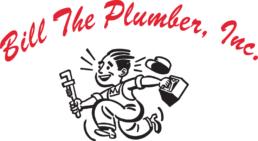Bradenton Leak Detection
In most cases the water line running to your home is “metered” for accountability and billing purposes. Here are a few methods to determine if you have a leak before you call your plumber. The more you do, the easier and quicker it may be to get it fixed.
Places To Sniff Out That Leak
- Hot Water Tanks: Inspect the Pressure Relief Valve on the hot water tank. These valves are often plumbed directly into a drain, which make them hard to detect. If possible, remove the drain pipe to check for a leak. If you can’t remove the drain pipe, listen for a hissing sound.
- Swimming Pools: This may be a tough one, but if you have a pool service, ask them if they think any leaks are occurring.
- Shower Heads and Faucets. This is a straight-forward inspection, but often overlooked if it’s a small drip leak. Those drops can add up!
- Leaking Toilets. Check for leaks by removing the top of the tank and put your ear as close as possible to listen. If you hear a hissing or dripping sound, try to locate where it is occurring. To test the flapper at the bottom of the tank, add a couple of drops of food coloring into the tank. If you see coloring in the bowl after a few minutes, your flapper probably needs replacing. At this point you can assess if you want to do the repair yourself, or call a plumber.
- Shut-off Valve at House. If you you have a shut-off by the house, shut it off temporarily and then find your meter, which is usually near the road by your house. If the dial on the meter is still turning, then the leak is between the meter and the house (unless your meter is leaking). Look for muddy areas or greener grass between the house and the meter. If the the meter has stopped moving, then the leak is somewhere in the house.
Play Detective With A Screwdriver
This method of detection requires only two simple tools: a screwdriver and your ear. Locate all the hose-bibs where you connect your outside hoses. Now place the tip of the screwdriver directly on the top metal part of the hose-bib. The idea is that the solid screwdriver acts like a stethoscope. To get this result, place your thumb on the top of the screwdriver, and then place your thumb on your ear. Your ear drum will pick up the sound of any hissing sounds associated with leaky pipes.
Check all outside hose bibs. If you hear a louder sound coming from any one hose-bib, then the leak is closer to that location. If none of your outside hose-bibs are leaking, follow the same process with indoor faucets, shower valves, washer and hot water heater. If your detective work didn’t turn up any culprits, contact your plumber. Nevertheless, you should be able to have a ballpark idea of where your leaks are, which will help your plumber and that translates into savings for you.
Bill The Plumber has the decades of experience and the team of technicians to detect and fix your plumbing leaks. By working with a professional repair expert, your troubles will be handled by the experts so you can enjoy your day knowing you are not wasting water or money on leaky pipes.
Contact Bill The Plumber with his reliable and experienced team today at (941) 845-6711.


